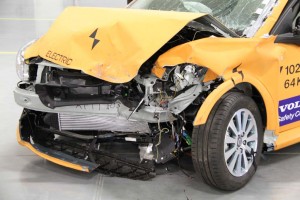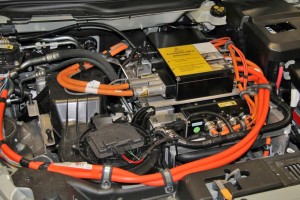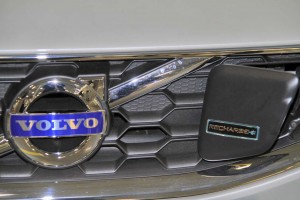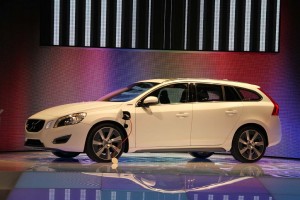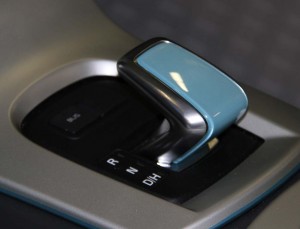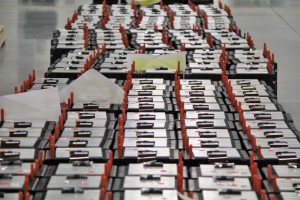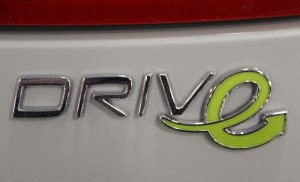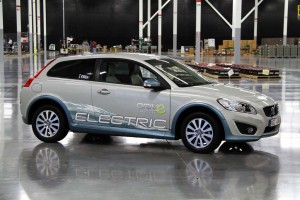
Volvo plans to produce only about 400 of the C30 Electric coupes, but the drivetrain will soon reappear in a new mass-market battery car.
The little coupe slips out the side door of a nondescript warehouse on the fringe of Indianapolis. Tickling the throttle it surges ahead and effortlessly merges into traffic, yet so quiet it’s easy to miss as it rushes by. Were it not for the bright white decals on the side of the car and the chrome DRIVe badge on the back one might not even notice the Volvo C30 Electric.
But the little coupe is the latest entry in a growing revolution, the move to electric power. Later this year, Volvo will put 400 of the C30 Electric battery cars on the road, a quarter of them here in the United States. They’re part of a project designed to test the new technology before Volvo launches a second battery-electric vehicle, or BEV, targeting a more mainstream market.
Getting in on the pilot program won’t be cheap. Volvo expects to lease the C30 battery cars for a whopping 1,500 Euros a month, about $2,100 at the current exchange rate. That’s nearly six times more than you’d pay to lease either the new Nissan Leaf BEV, or the Chevrolet Volt plug-in hybrid.
Even then, laments Lennart Stegland, president of Volvo’s specialty vehicle subsidiary, the Swedish maker won’t come close to recovering the cost of the development program, never mind the price tag on its 24 kilowatt-hours of lithium-ion batteries. But so it goes, he sighs, as you launch into an entirely new world of technology.
And Volvo, like its global competitors may not have much choice, Stegland stressed, during a conversation at the Ener1 battery plant in Greenfield, Indiana. By 2012, European regulators will require manufacturers to hit a fleet average fuel economy of about 66 mpg. That will soar to nearly 100 mpg by 2020. In the U.S., the Corporate Average Fuel Economy standard, or CAFE, will hit 35.5 mpg in 2016 and current proposals, if enacted, will push that to more than 60 mpg by 2025.
“The industry actually can’t make (those) targets,” said Stegland, without taking a lot of actions,” primarily a shift to what the industry refers to as electrification.
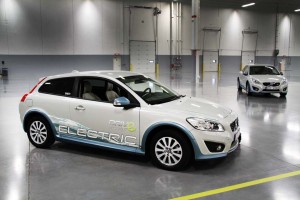
But for the decals and the charger port on the grille there's no visual difference between the C30 Electric and a conventional coupe.
In Volvo’s case, the maker will take three giant steps, starting with a BEV based on the C30 Electric, in 2012, following it a year later with a diesel plug-in hybrid version of the V60 in 2013, and then launching a more conventional hybrid shortly afterwards. New CEO Stephan Jacoby recently told TheDetroitBureau.com that he expects “the majority” of Volvo products will utilize some form of electric propulsion before the end of this decade.
(For more on the electrification program laid out by Jacoby, Click Here.)
Volvo isn’t saying much about the specifics of the battery car to follow the C30, but expect it to borrow the basic driveline developed for the current prototype. That means an 84 kilowatt – 110 horsepower electric motor powered by those 24 kWh of manganese-based lithium-ion batteries.
Currently, the basic chemistry for those batteries is handled in South Korea, the raw cells shipped to Indiana where they are assembled into a pair of large packs. One runs the length of the vehicle, where a driveshaft would otherwise be mounted, the other slipping under the back seats.
The Ener1 plant – which trades in the battery market as EnerDel – currently uses only a fraction of the 200,000 square-foot space available, its workforce operating at what might be described as a leisurely pace. But plans call for production to jump from 11,000 packs annually to more than 80,000 – and for Ener1 to fill double the floor space in order to supply not only Volvo but the little Norwegian battery car maker Think!, and the lawn mower company Toro, which recently introduced a special battery-powered golf course greens mover.
The good news is that as production goes up, “costs will come down,” said Tom Goesch, president of the transportation unit of Ener1. How much? Potentially quite a bit, Volvo’s Stegland suggested.
While neither company would provide specific figures, sources indicate the C30 Electric program was based on getting LIon batteries at about $1,000 a kWh. But Stegland confirmed that something closer to $500 is what it anticipates paying for the batteries used in the mass market Volvo electric vehicle, with a goal of getting it down below $350 a kWh over the life of that program.
That adds up to substantial savings. If the production vehicle holds to the 24 kWh size of the C30 battery pack, that would bring the cost down from $24,000 to $12,000 at the start, and perhaps to $8,400 – or less – later on. That starts to position the battery car as competitive with conventional gasoline power – without Volvo having to subsidize the technology and swallow a loss.
Of course, price alone isn’t everything, the Volvo executive acknowledged. Factors like performance and range will weigh in for consumers considering future battery-based vehicles.
“There are a lot of people afraid of not being able to come home” because of the limited range of a battery car, he said, admitting there’s a sizable portion of the public who will give up their gas-powered vehicles only when you pry the steering wheel out of their cold, dead hands. But Volvo – like its competitors – is betting that a sizable number of buyers will accept the idea that battery power can meet their everyday needs, especially if they have a second vehicle for longer journeys.
In the case of the C30, range is estimated at 75 to 90 miles, with the actual figure depending on such things as driving style and weather. Electric heat drains a battery quite quickly.
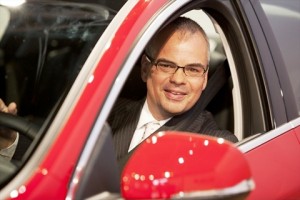
Volvo CEO Stephan Jacoby says the "majority" of the maker's products will rely on battery power of some form by 2020.
Acceleration was originally estimated at 10.5 seconds from 0 to 60, though Volvo slowed that down to 12 seconds to improve range. Significantly, electric motors deliver maximum torque the moment they start turning, so acceleration is actually more peppy than that might seem from 0 to around 35 mph, where it is more in line with a conventional gasoline version of the C30 coupe.
Steering is an electro-hydraulic system – which will likely migrate to a pure electric system on the volume BEV – and provides a surprisingly similar feel to the standard-issue C30. Indeed, under most circumstances, a drive getting into the C30 Electric and not aware of the technology under the hood – or what those new gauges represent – might not even realize something has changed.
Those gauges indicate such things as state-of-charge, range and the amount of energy being consumed at any given moment. The other major visual different, in the cabin, is the modified blue shifter knob – Volvo envisioning light blue to be, says Stegland, “the color of electricity.”
You can shift into Reverse, Neutral, Drive or what Volvo calls “Highway Mode,” which reduces the amount of regenerative braking – which is designed to recapture energy normally lost during braking or coasting. That’s good news because some vehicles, such as the prototype Mini-E, use a disconcerting amount of regen on the highway. Lift your foot and you feel like you’ve stepped down on the brake rather aggressively. In Highway Mode, the Volvo C30 Electric coasts much like the conventional coupe.
If there’s anything unusual about driving the C30 Electric it’s the near lack of noise. The cabin is virtually silent, even at 60, Volvo engineers making a point, according to Stegland, to eliminate the “stumps in the swamp,” as the sounds of tire noise, accessory drives and even the tic of the clock are collectively known. Normally masked by a car’s internal combustion engine they can be downright annoying when running on otherwise near-silent battery power.
That included the unusual heating system. Technically, you could argue the Volvo C30 Electric isn’t a true zero-emissions vehicle. To reduce battery demand, the cabin can be heated electrically – or through a furnace-like system that runs on ethanol. Volvo opted for this approach because it can nearly double range on a cold day.
Our drive in the C30 was marred by one incident. As we headed back to the Ener1 plant the battery coupe suddenly lost a lot of its power. We could barely make it up over one hill without losing speed. Stegland initially suggested we had gone into limp-home mode and, indeed, the state-of-charge indicator showed us in the red. That mode cuts power substantially to give you an extra five or six miles as you approach the battery cut-off point.
He later suggested the C30 Electric prototype might have had a different problem with its software, technicians plugging a computer into the controller to see what really happened.
Still a prototype, we’re cautiously willing to forgive the glitch – as long as it doesn’t happen again.
But the overall driving experience was more than enough to satisfy most drivers who aren’t worried about range of 75 to 90 miles.
The price tag, well, that’s another matter. We only can hope Volvo really does adopt a more realistic price when it goes after mainstream buyers with the next battery car on its production schedule.

